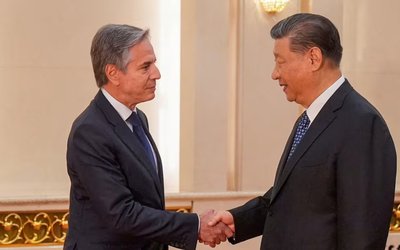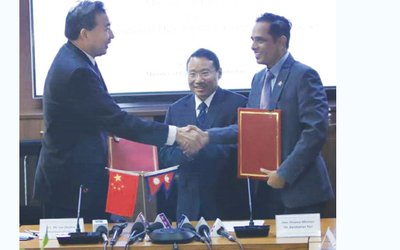
The Vietnamese foreign minister Pham Binh Minh says, his country would want to see more of India's presence in South East Asia not only politically but also economically. The region's rising powerhouse is not alone in wanting to see its rising South Asian counterpart to be significantly present in the region. Only recently tiny Singapore called on India to start negotiations on a full air transport agreement with the ASEAN countries. Another key South East Asian nation of Thailand is getting ready to lay red carpets for Indian investment. The government-owned Board of Investment (BOI) has opened its overseas office in Mumbai to lure potential Indian investors by showcasing investment opportunities in Thailand.
It's not that the 10-member ASEAN that is made up of Brunei Darussalam, Cambodia, Indonesia, Laos, Malaysia, Myanmar, Philippines, Singapore, Thailand, and Vietnam have found a new love for India. They have been doing business for quite long. In recent years, however, there appear to be some kind of urgency on their part to bring the South Asian powerhouse along their political and economic journey ahead. In fact, they would even wish to forge a strategic cooperation as well. The reason: the perceived threat from the emerging world power China. India has a stake too in spreading its wings to the east as its giant communist rival looks to assert its presence in the region. Both India and the South East Asian nations share common interest vis-à-vis their perceived threat from the roaring Dragon.
ASEAN welcomed China's Asian rival and a potential economic powerhouse India as its full dialogue partner in 1995 shortly after India announced to have begun to Look East. This was apparently in response to the Chinese dream of leading the region. Experts say, India’s economic potential is heavily weighed in the region’s scheme of alliance-making. Even more important," according to them, is a semblance of strategic balance in Southeast Asia that remains dominated by China’s ever-growing military might. Ultimately, the economic and strategic considerations shouldered India into Southeast Asia and paved its way into ASEAN.
And it is these considerations that had resulted in the growth of cooperation between the two in recent years. The eagerness of the ASEAN and the Look East policy of India have together given an impetus to efforts to bring the two closer in a number of areas. The Look East couldn't have been better timed for both India and the ASEAN nations coming as it did amidst the growing uneasiness in relations between India's rival China and most of the countries of the region. China has border issues, maritime issues -- the most pronounced being the row over the South China Sea -- with many of the ASEAN countries. Given the vast potential of joint collaboration to the mutual benefit in the region, China has been prudent enough in seeking not to rock the boat. It has sought to improve relations with the region's countries through dialogue. This has borne fruits as well. The ASEAN–China Free Trade Area which is the largest free trade area in terms of population and third largest in terms of nominal GDP, is one example. Interestingly, ASEAN has entered into a similar arrangement with India. The setting up of the ASEAN-India Free Trade Area (AIFTA) three years ago has been hailed as a landmark event .
But India has a long way to become competitive with China, especially in economic and trade relations with the region, which are hugely tilted in Beijing’s favor. Take the case of trade, for instance. India's trade with the ASEAN is roughly 80 billion dollars and is projected to increase by a quarter in the next two years. This compares very poorly with its Asian rival, China’s which stood at 400 billion dollars last year. But the non-economic factors especially the Dragon threat perception that the ASEAN nations hold could give the Elephant a vital edge in the race to win the region times to come.
- Ukrainian Crisis And The World (Dis)Order
- Apr 22, 2022
- China’s Cautious Steps In The Graveyard Of Empires
- Aug 18, 2021
- Foreign Aid On The Fence!
- Aug 08, 2021
- Communist Party of China centenary celebrations Reading between the lips
- Jul 14, 2021
- Second Wave Of Covid-19 In India: Deadly Blow To The Economy
- Jun 23, 2021
















